Standing in the immigration hall at Delhi’s Indira Gandhi Airport clutching a sick bag, I’m regretting the Cheese & Port that chased my supper on the plane the night before. Delhi and India as a whole have moved on significantly since I last visited over a decade ago. Barely five minutes have passed since joining the passport queue and we’re collecting our bags in an air conditioned arrivals hall.
Monsoon season has almost ended but the rains last well into mid-September in Delhi. It won’t be long until we are greeted by a hot humid blast of air on leaving the arrivals hall to meet our driver. Hiring a car and driver for the day is a perfect way to see Delhi if you’re not intending to stay the night in the city. Rates are affordable and you can be ferried to and from the sights without the hassle of carrying heavy luggage around!
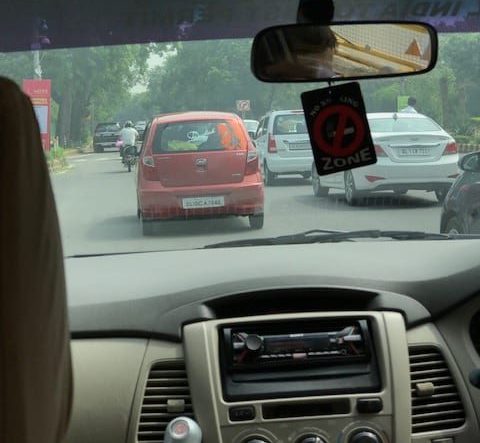
Every motorcycle trip outside Europe now seems to start with playing airport SIM card resellers against one and other. No one wants to pay a small fortune for thimble-sized quantities of data when traveling overseas. Data is cheap in the developing world, governments know economic progress goes hand-in-hand with cheap mobile internet connectivity.
In the past a government mobile operator (BSNL) handed out free SIM cards to tourists on arrival. But this initiative appears to have ceased. Foreigners have reported difficulties in trying to buy SIMs outside the airport without providing several forms of identification. We opt for Airtel pre-pay SIMs costing around 1,000 rupees each. Included are a handful of minutes, texts and a few gigabytes. Paired with a 4G mobile hotspot avoids swapping out my own SIM as data is accessed through the hotspot’s WiFi. However forgetting to turn off automatic app updates will make those gigabytes will quickly evaporate.
An overnight bus will take us to Manali nestled in the foothills of the Himalayas to best make use of our time in India. Departing later that evening from the Inter State Bus Terminus in Delhi known as Kashmere Gate ISBT. Following the end of the British Raj in India, the government has approved name changes of cities, states and points of interests back to their indigenous versions. “Maharana Pratap Inter State Bus Terminus” is the official name for Kashmere Gate bus station. All essential knowledge when you are trying to agree with your rickshaw/taxi/driver which bus terminus you wish to arrive at successfully. But that is a problem we need to worry about later in the day.
For those familiar with Indian automotive history, gone are the days of herds of Hindustan Ambassadors lining roads of India as if on a perpetual great migration. Based on the Morris Oxford Series III – those wishing for a classic 1950s ride are now mostly enthusiasts and high-ranking military personnel. Depending on how much you were willing to pay for your safety. The Ambassador came with optional extras such as: power brakes, power steering and even air conditioning!
Today our impeccably dressed driver arrived not in an Ambassador but Toyota Innova people carrier. One of the many foreign cars now available in India, with all the previous options installed as standard. The inevitable argument as to why the air conditioning has been turned off 10 minutes into the journey should be less likely!
While Delhi boasts a new metro system, luxury cars and high-speed rail services in the works. I’m almost nostalgic for when you could hail an auto-rickshaw (tuk-tuk) to take you into town direct from the airport. No longer permitted within the airport, their presence also appears to be reduced on the roads too. India’s booming middle-class now have air-conditioned European cars. The traffic problem has not eased but journeys are far more comfortable. Outside the acoustically damped modern cars, the symphony every kind of vehicle horn continues existence as millions of Delhiites make their way to their destinations. While trucks adorned with polite slogans such as “HORN PLEASE” and “USE DIPPER AT NIGHT” navigate crowded roads. All done with the same elegance as a leaf in a stream.
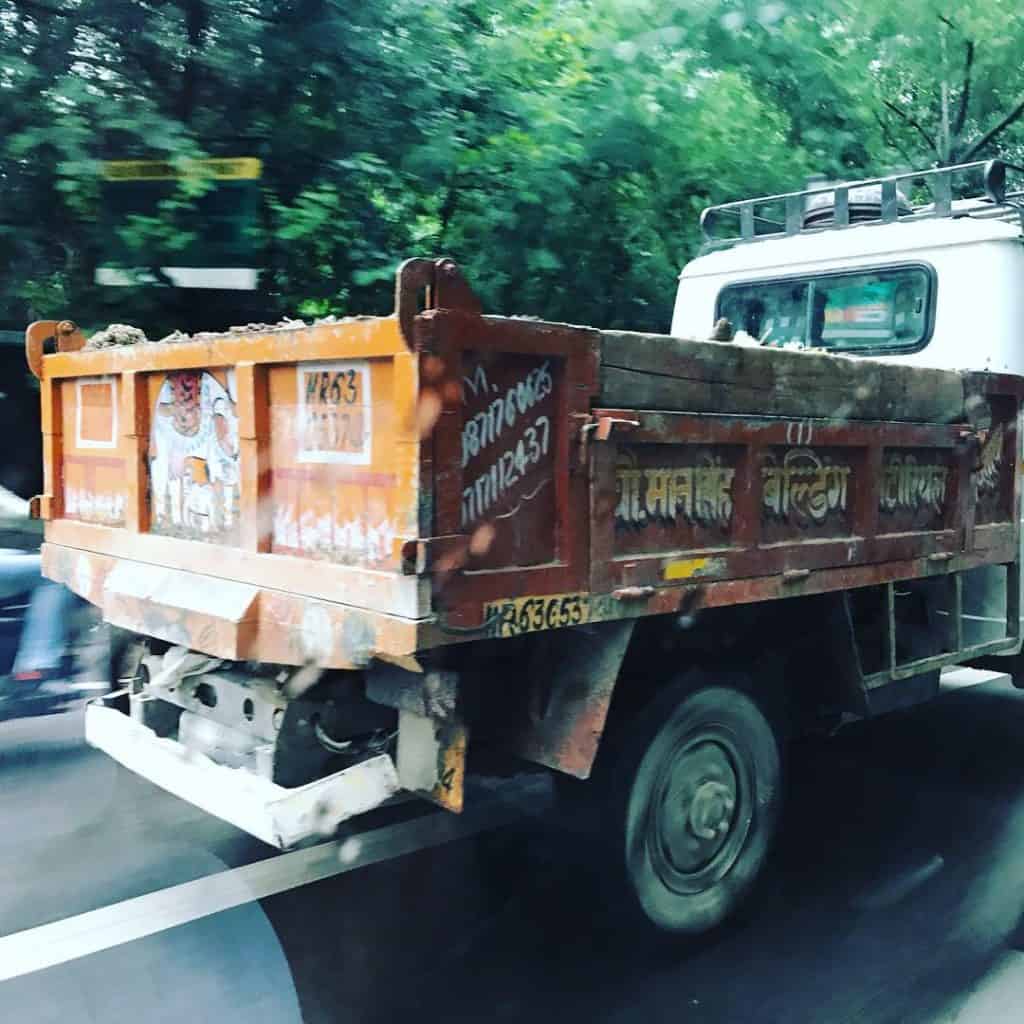
To kill time before we leave for the bus station, we drive around the city visiting the the usual sights. The Qutub Minar (informally known as the Leaning Tower of Delhi), the Cottage Industries and the famous Indian sweet shop Haldiram. Wide boulevards and the grand Indo-Saracenic buildings of New Delhi designed by Edwin Lutyens undoubtedly leave a majestic impression. Thunderstorms circle above and heavy bursts of rain give a brief respite to the heat. Only until the rain evaporates off the hot ground adding to humidity so thick it could be cut like butter.

We arrive at the Kashmere Gate bus station after dark. The traffic has settled but as with many public places India finding the correct entrance is a somewhat abstract task. After navigating a series of roadblocks where throngs of people rush for their buses. Our driver bids us farewell on our upcoming Himalayan adventure. Help is to hand where ever you are in India. Although it comes at a price if you’re not a Jedi master at haggling. Rule 1 of haggling: always be willing to walk away from a deal. Easier said than done with luggage. With four large bags, backpacks, helmets and sundries. We accept a porter’s offer of carrying our bags from the entrance to where the buses depart on the other side of the station but are 300 rupees lighter for it!
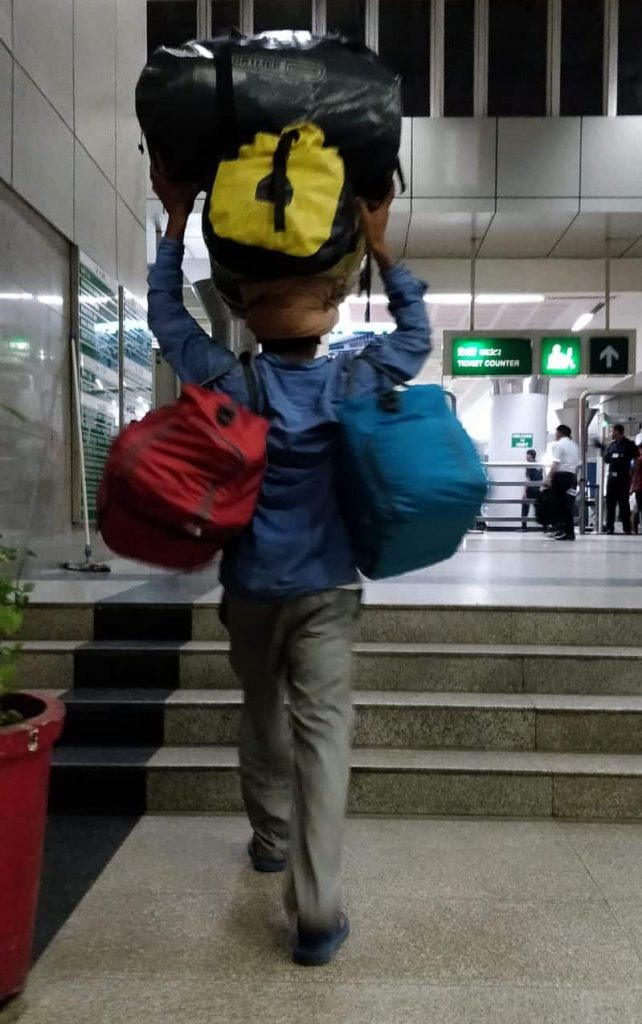
Tickets can be booked on the day of departure. But most book their tickets online up to 60 days in advance all the way to 4 hours before departure. All done through the Himachal Road Transport Corporation website. The comfortable Volvo/Scania air conditioned buses sell out quickly so booking in advance is advisable.
There’s a buzz of excitement by the bus stands. Nearly everyone here is heading home for the weekend or making their way to the Himalayas. We buy a few provisions for the journey from the food stall opposite. Worried that we might miss our departure with the constant coming and going of buses. I periodically ask an official caged inside a shoe box sized booth as to whether our bus has arrived. As with many populous places in the world, polite queuing does not take you very far. Much like a busy London pub pushing your way through the crowd is the only way to get bartender’s attention!
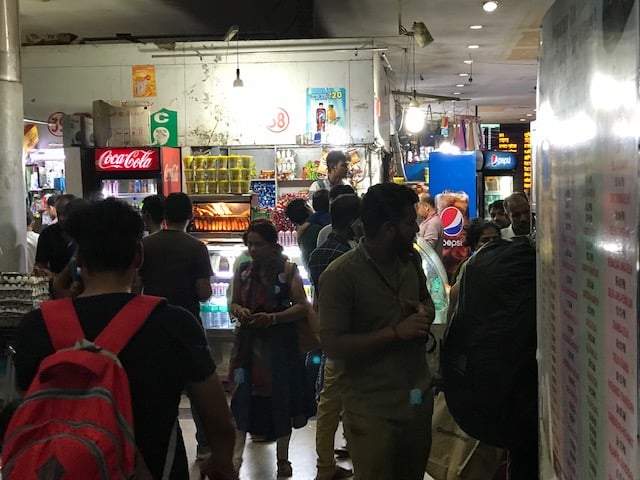
Our bus rolls into its stand without any hint of destination or time of departure. Others loading their bags reassure us this is the bus to Manali. Custom dictates tipping the guy loading your bags into the bus’ hold. Supposedly this is to keep them safe, from whom I’m not sure. There is no fight for seats on-board each reservation has assigned seating. While we could’ve rented motorbikes from Delhi, it was our aim to spend as time possible in the mountains.
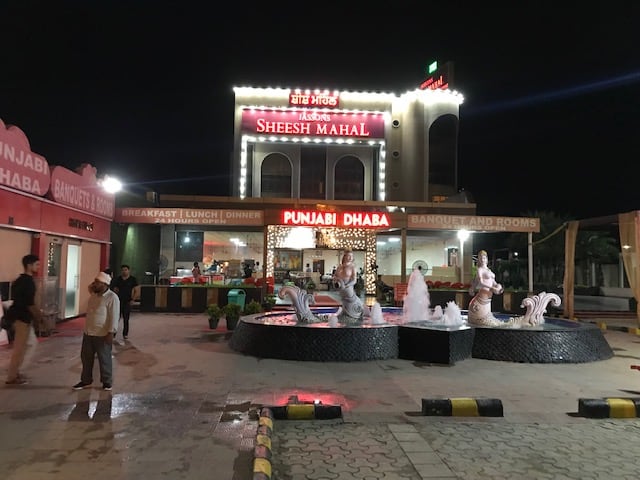
Although tired and needing the sleep for what will be a 10 hour ride we struggle to get some rest. The seats recline somewhat and the cabin is chilled. It’s probably the curiosity of the passing lights and occasional pothole that keeps us awake. We stop at the first dhaba of the night. These roadside restaurants are open 24 hours serving food to hungry truckers and travelers alike. Filtered water is supposedly available at designated bus stops but we could not find any. With each stop further North, fewer people disembark and the remaining passengers whittle down to those headed to Manali. We nod off to sleep every now and then hoping our 8am arrival will come sooner if we’re counting sheep!


0 Comments